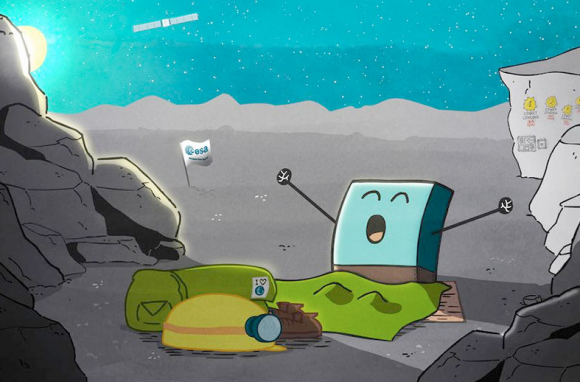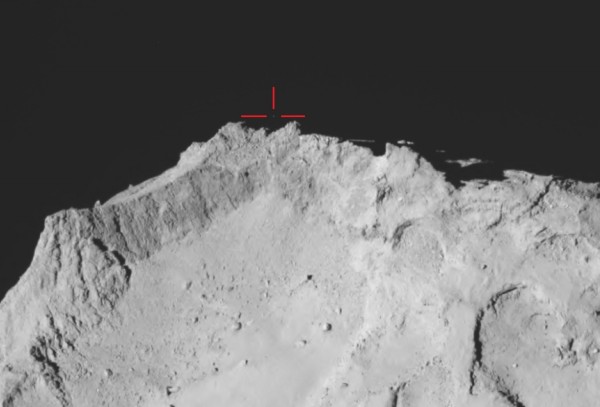
By Paul Southerland, sen.com
Space scientists’ joy at renewing contact with their comet lander Philae has turned to frustration over efforts to establish a stable connection between the probe and its mothership Rosetta.
Since Philae phoned home on June 13 for the first time after losing power last November, communications have been intermittent. Confirmed contacts have occurred during seven spells on June 14, 19, 20, 21, 23, and 24 but have not been enough to allow a useful exchange of data.

Reporting on the European Space Agency’s (ESA) Rosetta blog, space science editor Emily Baldwin says that contact on June 19, for example, was stable but split into two periods lasting just two minutes each. A link on June 23 lasted only 20 seconds and was unstable. The following day, a 20-minute link was established, but the quality was patchy, allowing just 80 packets of telemetry to be received.
Part of the problem is the geometry of the two spacecraft as they study Comet 67P/Churyumov-Gerasimenko. Rosetta is orbiting the comet, but the comet itself is also rotating with a period of 12.4 hours, which means that Philae’s landing site is not always in view of Rosetta. The comet’s rotation also means that there are periods when Philae is out of sunlight and so failing to generate enough power via its solar panels to communicate.
Computer models of how the comet is rotating beneath Rosetta suggest to the mission team that there should be windows during which they achieve contact between the mothership and Philae lasting between a few tens of minutes and up to three hours. The dream situation at such times would be for Philae to be powered-up and listening for Rosetta, establishing a link and then transmitting data, with a minimum contact period lasting at least 50 minutes. Dr Baldwin explains that the lander holds two mass memories and it takes about 20 minutes to send the contents of each to the orbiter.
The situation is not helped by the need to keep Rosetta at a greater “safe” distance from Comet 67P at the moment as it becomes more active, warmed by the Sun and spraying jets of gas and dust on its approach to perihelion, the innermost point in its elliptical orbit through the Solar System, on Aug. 13. This greater distance means that Philae’s signal is much weaker than it would otherwise be. How the orbiter is oriented in space, and thus the way its antenna is pointed, can also affect communications.

Enjoying EarthSky? Sign up for our free daily newsletter today!
Because the mission scientists are unable to make any changes to Philae at present, their efforts are being focused on changing the orbit and orientation of Rosetta itself, while keeping the spacecraft’s safety the top priority. Its trajectory currently carries it over the comet’s terminator—the boundary between the lit and unlit sides. The ground track of this orbit is being shifted from +55° on June 24 to -8° on June 26, because better quality signals have been received when Rosetta was flying at lower latitudes. Following the landing in November, Rosetta was flying between latitudes of +15° to +25°, and Rosetta will gradually move northwards again from its -8° point to allow mission controllers to assess when it is at its optimum position.
ESA’s Rosetta team is working closely with the Lander Control Centre at the German Aerospace Center (DLR) in Cologne, and the Lander Science Operations and Navigation Centre at the French space agency (CNES) in Toulouse to try to establish a useful and reliable link with Philae again.
Dr. Stephan Ulamec, Philae Project Manager at DLR, told Sen:
We are still trying hard to get longer and stable RF link between Lander and Orbiter.

More from Sen:
ESA approves extension for comet mission Rosetta
Cassini spends week observing Saturn’s magnetic personality
Original story from Sen. © Sen TV Limited 2015, all rights reserved. This material may not be published, broadcast, rewritten or redistributed. For more space news visit sen.com and follow @sen on Twitter. Used with permission.











